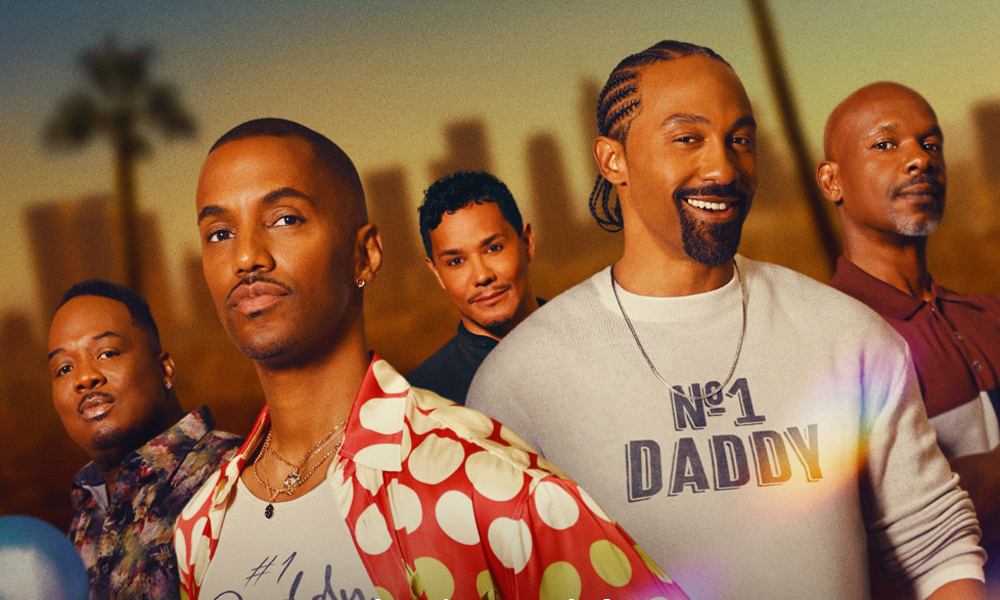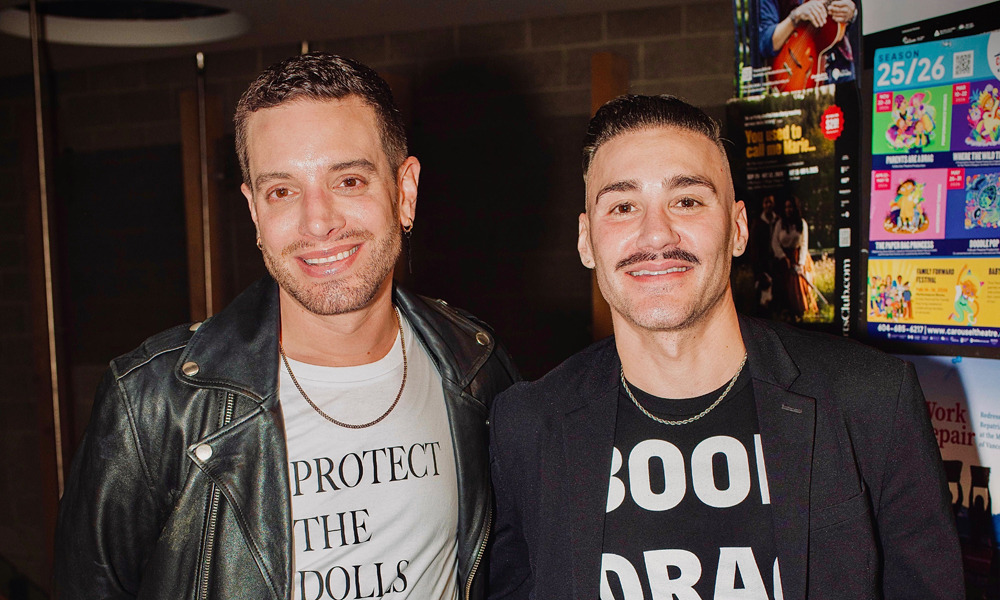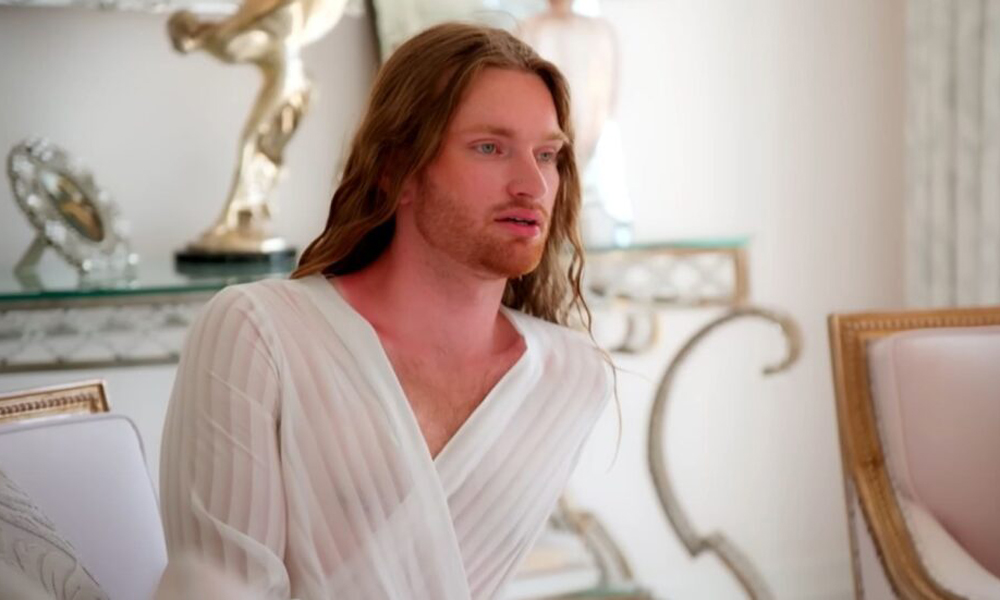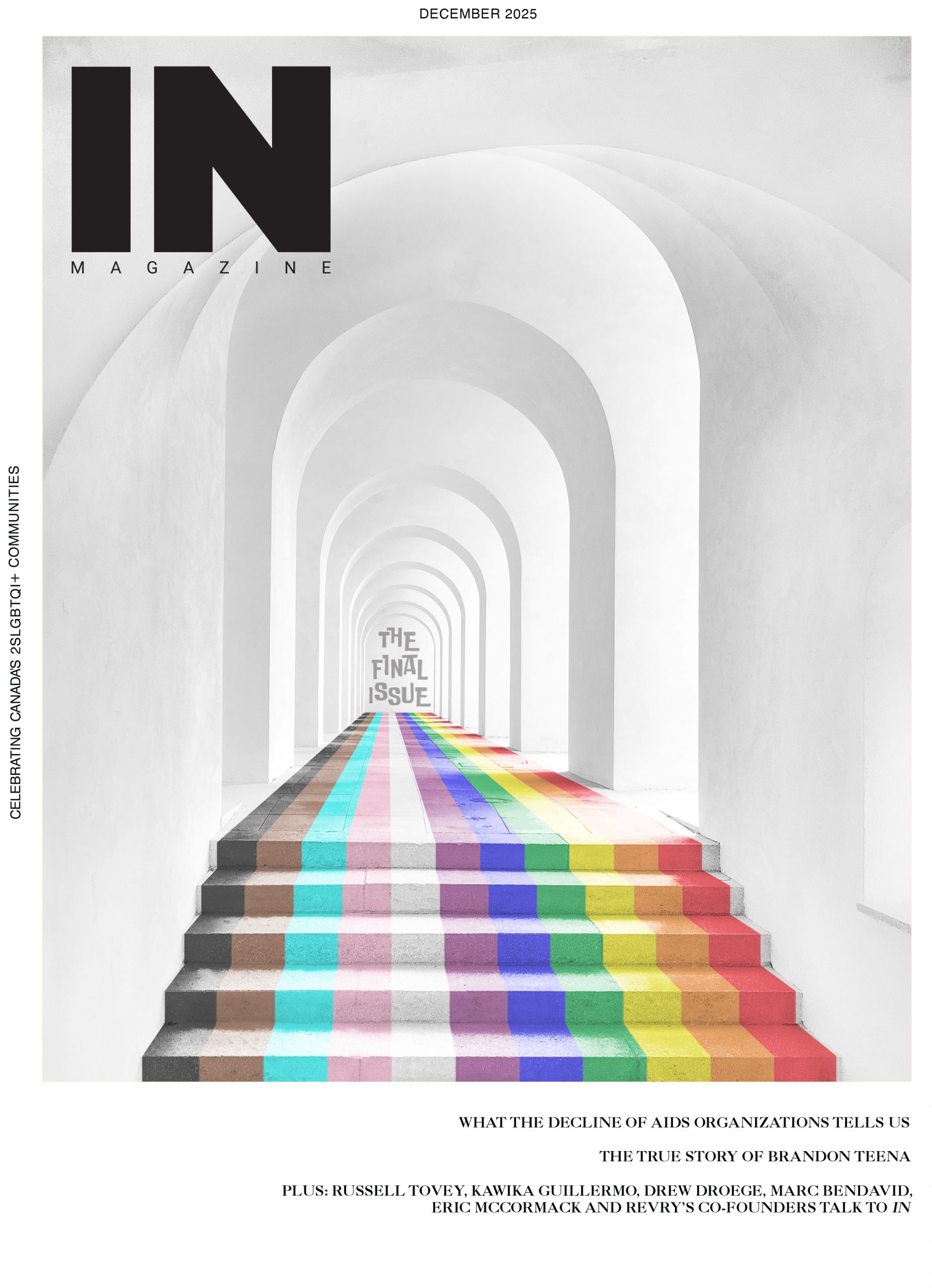Two decades since its small-screen debut, the groundbreaking Noah’s Arc returns at a time when Black LGBTQ+ media is needed the most…
By William Koné
Back in the 2000s, I visited a website called TV.com almost daily. It was an online encyclopedia for all things television that solidified my passion for the art form. What made the website my sanctuary were the forums, as I could connect with fellow TV lovers to discuss my favourite shows. One day, I stumbled upon a user with an avatar that moved me. It featured two gorgeous Black men, one with cornrows and the other with Type 4 curls, affectionately embracing one another. In asking who these men were, I was told that they were Noah and Wade from the comedy series Noah’s Arc. Curiosity and fear consumed my mind. It was the first time I had ever seen a Black gay couple in media, but as a closeted 13-year-old boy, I was terrified of being outed. Silencing my sexuality, I believed, was the only means of security I had.
When I finally started watching Noah’s Arc, that fear slowly dissolved. For 20 minutes at a time, I saw Black gay men who were fully realized in their sexuality – realized in ways I didn’t think possible. Noah, Alex, Ricky and Chance were proof that you could thrive in your Blackness and your queerness at the same time unapologetically. They were examples that weren’t visible in my everyday life back then, which helped me feel less isolated within my sexuality journey.
Noah’s Arc set a precedent that was unseen in television. It was the first scripted series from LGBTQ+ channel Logo and the first scripted series to centre on Black gay men in America. Noah’s Arc followed the personal and professional challenges of a Black gay friend group in Los Angeles, a narrative previously reserved for straight women (think Sex and the City and Girlfriends) or white gay men (think Queer as Folk and Will & Grace). After two seasons, a feature film and an online reunion special, Noah’s Arc has now returned, 20 years later, in a new television film available on Paramount+. This comes at a time where Black LGBTQ+ media has reached a standstill.
The 2025 GLAAD Studio Responsibility Index revealed startling findings about LGBTQ+ representation in film for 2024. Only 23.6 per cent of major studio releases featured any LGBTQ+ characters at all. This is a considerable decrease from the Index’s 2023 study, which had 27.3 per cent LGBTQ+ characters, while their 2022 study had 28.5 per cent LGBTQ+ characters. Only 33 per cent of 2024 films featured LGBTQ+ characters of colour, whereas 2023 featured 46 per cent – another drastic decline. Black folks only accounted for 10 per cent of the LGBTQ+ characters found in 2024 films. Meanwhile, LGBTQ+ characters living with HIV weren’t featured in any major studio release in 2024.
These findings coincide with highly anticipated television projects about Black queer men getting greenlit but with limited prospects. Over the past five years, the adaptation of E. Lynn Harris’ novel Invisible Life, the adaptation of Aaron Foley’s novel Boys Come First, Jaboukie Young-White’s adaptation of Vanessa R. Panfil’s novel Gangs All Queer, and Bernard David Jones’ Remember have all been announced, with zero progress to the small screen. We’re witnessing the presence of Black LGBTQ+ narratives diminish before our eyes. As a Black gay screenwriter, this is distressing, as I’m adamant about creating stories advocating for my communities. When our likeness isn’t reflected within the media, it calls into question whether our livelihood matters. The revival of Noah’s Arc offers hope within the television and film landscape by expanding the legacy of the iconic series, while reminding folks that there is still an appetite for Black LGBTQ+ content.
During its run, Noah’s Arc was praised for its depiction of relevant social issues. The series normalized gay marriage at a time where it was legalized in only one American state. We followed a later-in-life coming out with Noah’s love interest Wade (played by Jensen Atwood), making way for nuanced portrayals of sexuality beyond a straight versus gay binary. The series critiqued internalized homophobia and hypermasculinity pervading queer men. Noah’s Arc also humanized those living with HIV, while advocating for safe sex and STI testing. The new film expands the scope of the original by exploring parenthood, grief, aging and illness among the characters.
Creator Patrik-Ian Polk has mentioned that his inspiration came not only from the absence of Black LGBTQ+ media, but the advice of fellow Black gay filmmaker Rikki Beadle-Blair, who suggested Polk write the story that only “he really knew.” Polk’s persistence within an industry that silences marginalized voices allowed our stories to be placed at the forefront on TV. This legitimized the Black LGBTQ+ experience in media, paving the way for future films and television series, including the Oscar-winning Moonlight and the Emmy-winning Pose.
What I loved most about Noah’s Arc was its complex depiction of Black gay men. The core four had different skin tones, personalities, career paths and romantic aspirations. Watching Alex (played by Rodney Chester) and Chance (played by Doug Spearman) navigate the highs and lows of domestic life with long-term partners felt liberating, as until then I had only seen this with heterosexual couples onscreen. Seeing Ricky (played by Christian Vincent) have his own business and firmly oppose marriage was eye-opening, as I was raised in a family that prioritized marriage as a marker of success. Watching an effeminate Black man like Noah (played by Darryl Stephens) take pride in his identity, while still being desired by other men, eased the pressure to be something I’m not. I felt like an honorary member of the clique as I aspired to have friends like these in my own life.
With the new television film following these beloved characters in their 40s and 50s, Noah’s Arc breaks new ground by depicting midlife among Black queer men. While Billy Porter and Nathan Lee Graham both portrayed seasoned queer characters in Pose and Mid-Century Modern, both were supporting characters among a predominantly younger or predominately white cast. BBC’s Mr. Loverman won two BAFTA TV awards for leading and supporting actor, but was billed as a limited series. Meanwhile, recent films like All of Us Strangers and Queer explored anxieties in midlife; however, both were told solely from a white perspective. This creates a gap within media de-centring Black LGBTQ+ folks of a certain age, making the Noah’s Arc film a welcome addition to the midlife film canon. Fortunately, Noah and his friends don’t have to worry about competing for screen time, as their experiences are what define the story at hand.
In a 2024 study conducted in British Columbia, research supported findings that gay men over the age of 50 were more prone to depressive and anxious symptoms compared to straight men. Loneliness has been cited as a key contributor, while ageism has been cited as another factor based on internalized homophobic attitudes associating youthfulness with higher life satisfaction. In the past year, new LGBTQ+ media have catered largely to queerhood among youth, including Overcompensating, What It Feels Like for a Girl, Adults and Dreams in Nightmares. As important as it is for younger queer audiences to access content validating their experiences, I can’t help but wonder how older queer audiences feel when witnessing stories they can no longer relate to. I’m a firm believer that television and film are the most accessible platforms for folks to find themselves. If we’re all rooted within the human experience, then why is one perspective most visible within the mainstream media?
It was imperative for my teen self to see the characters of Noah’s Arc thrive in their 20s and 30s. The series and the film showed that a Black queer future was possible during a painful time in my life. In coming to terms with my sexuality, writing rather than seclusion became my protective shield by allowing me to construct realities that celebrated Black LGBTQ+ folks. I can’t imagine reaching that point without having Noah’s Arc ground me in the early years of my queerhood. I believe it’s equally important to see the Noah’s Arc characters thrive midlife to prove that Black queer joy isn’t restricted to youth. Such portrayals could save the life of someone eager for their identity to be validated.
Given the political unrest threatening the humanity of LGBTQ+ folks in America today, reprieve within the media we consume is necessary to obtain hopefulness through these unsettling times. With the new Noah’s Arc film debuting in the Top 5 on Paramount+, it’s clear that this franchise remains impactful to long-time and recent fans alike. Despite the challenges persisting within LGBTQ+ media, the enduring love surrounding Noah’s Arc’s legacy makes me hopeful that a change welcoming more Black queer stories is imminent.
WILLIAM KONÉ is a Black gay screenwriter and a registered psychotherapist based in Toronto. A self-proclaimed TV enthusiast and a long-time member of the Beyhive, he has a penchant for ’90s media, relationship dramas and the Real Housewives franchise.







POST A COMMENT